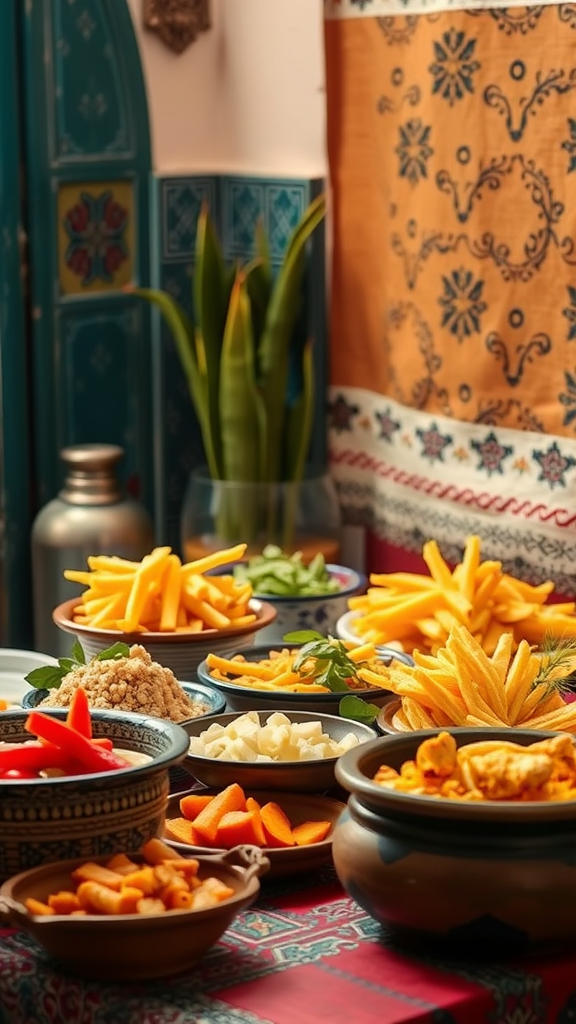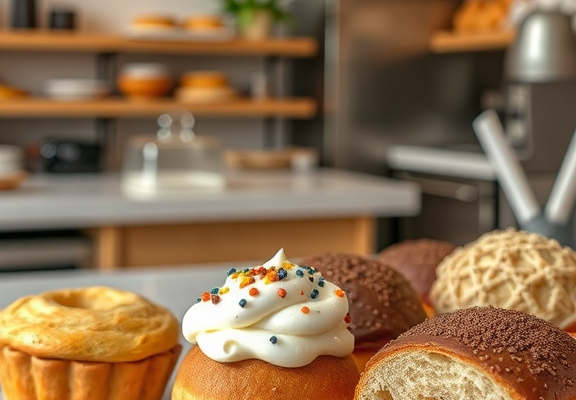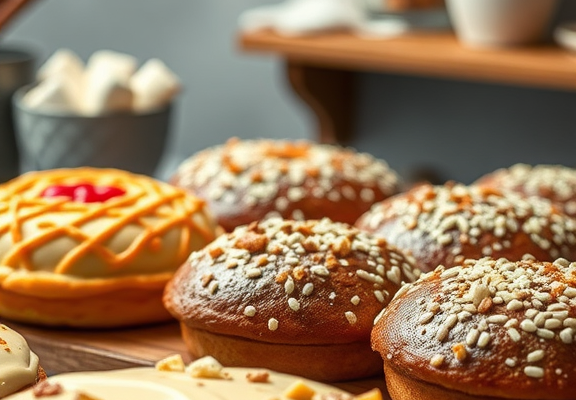Exploring the Rich Tapestry of Cultural Food Experiences in Morocco
Marrakech, Chefchaouen, Fez, and Tangier provide a kaleidoscope of flavors, scents, and traditions waiting to be discovered. When you think of Morocco, your taste buds should be tingling at the thought of tagines, couscous, and countless spices. Food in Morocco is not just a meal; it’s a celebration of history, culture, and community.
Thank you for reading this post, don't forget to subscribe!Moroccan food experiences are enriched by the country’s diverse cultural influences, which include Berber, Arab, and French culinary traditions. This melting pot creates unique dishes that you won’t find anywhere else. You may want to start your exploration in the bustling markets. The vibrant souks offer an array of local dishes prepared fresh on the street. These markets are not only a feast for the eyes but also an incredible adventure for your palate.
Traditional Moroccan Dishes
- Tagine: This is perhaps the most iconic Moroccan dish. A tagine is a slow-cooked stew made in a conical clay pot. Options include chicken with apricots or lamb with prunes, both rich in spices like cumin and coriander.
- Couscous: Often served with vegetables and meat, couscous is a staple in many Moroccan households. It’s typically eaten on Fridays and is often accompanied by a special broth.
- Bastilla: A savory pie typically made with pigeon, this dish is layered with crisp pastry and dusted with powdered sugar and cinnamon for a sweet-savory flavor profile.
- Harira: This hearty soup is especially popular during Ramadan. It’s made with lentils, chickpeas, and various types of meat, flavored with herbs and spices.
Each of these dishes tells a story, reflecting the seasonality of ingredients and the regional diversity of Morocco. You might find seafood dishes on the coast, whereas inland you would enjoy hearty meat-based meals.
The Role of Spices in Moroccan Cuisine
No discussion of Moroccan food is complete without mentioning spices. The country is famous for its spice markets, where you can shop for saffron, cumin, cinnamon, and more. These spices are fundamental in defining the unique flavors of each dish.
Many cooking classes are available where you can learn about blending spices. You can head to a local’s kitchen and see how a dash of harissa or a sprinkle of ras el hanout can transform a simple dish into a tasting experience that dances on the tongue. This hands-on experience not only broadens your culinary skills but also deepens your appreciation for Moroccan culture.
Culinary Events and Festivals
Throughout the year, several culinary festivals celebrate Moroccan cuisine and its rich cultural heritage. One major event is the Marrakech Food Festival, showcasing the best of Moroccan chefs, street food, and local delicacies. You’ll find tastings, cooking demonstrations, and culinary competitions here.
Moreover, visiting during a festival allows you to connect with locals, experience traditional music, and engage with the community. Visitors often describe these events as transformative experiences, filled with laughter, dancing, and, of course, mouthwatering food.
Dining Etiquette
Understanding dining etiquette can enhance your cultural food experiences. For instance, you should always eat with your right hand, as using the left is considered impolite. Additionally, meals often start with a communal dish where everyone shares. This aspect of dining is a beautiful reminder of the importance of community in Moroccan culture.
Moroccan mint tea is usually served at the end of your meal, symbolizing hospitality. You’ll notice that the tea ceremony is also a performance, with the server pouring from a height to create a frothy top as an expression of care and tradition.
Your journey through Moroccan cuisine can also take you beyond just tasting food. Participate in cooking classes, enjoy street-food tours, join locals for meals, and participate in culinary festivals to gain a full understanding of the rich tapestry of cultural food experiences in Morocco. This adventure will not only tantalize your taste buds but also deepen your love for Morocco as a whole, giving you stories to cherish for a lifetime.
The Role of Traditional Moroccan Spices in Culinary Heritage
Morocco is a land rich in culture and tradition, and its culinary heritage stands out as one of the most flavorful aspects of its identity. At the heart of Moroccan cuisine are traditional spices, which not only bring dishes to life but also tell the story of a nation deeply influenced by various cultures. From the bustling souks of Marrakech to quiet kitchens in Fes, spices weave through every meal, creating a taste sensation that reflects centuries of history.
The essence of Moroccan cooking is often captured in its famous spice blend, known as ras el hanout. This unique mixture can contain anywhere from a dozen to over fifty spices. Each family may have their own secret recipe, passed down through generations. The blend exemplifies the Moroccan approach to cooking: complex, aromatic, and deeply layered. Common ingredients in ras el hanout include:
- Cumin
- Cinnamon
- Paprika
- Turmeric
- Cardamom
- Cloves
- Ginger
These spices not only enhance the flavor of dishes but also offer health benefits. For example, cumin aids digestion, while cinnamon helps regulate blood sugar levels. The use of these spices reflects a holistic view of food that encompasses both taste and well-being.
Another cornerstone of Moroccan culinary heritage is saffron, renowned for its distinct flavor and vibrant color. This luxurious spice is the most expensive in the world, often harvested by hand, making it a prized possession in Moroccan kitchens. Saffron is commonly used in tagines and rice dishes, imbuing them with a golden hue and an intricate aroma that is unmistakably Moroccan. The love for saffron highlights the country’s connection to agriculture and the land, with farmers tending to their fields in the Atlas Mountains where the spice flourishes.
Moving beyond individual spices, the art of spice blending in Moroccan cuisine is truly remarkable. The method of pairing flavors can elevate even the simplest of meals. For instance, a classic Moroccan tagine may include chicken or lamb, paired with dried apricots, almonds, and a mix of spices. This combination creates a dish that is hearty, sweet, and savory all at once, showcasing how spices serve as bridges between various taste profiles.
Furthermore, the social role of spices in Morocco cannot be overlooked. Meals are often seen as communal events, with families and friends gathering around a shared table. Spices play a pivotal role in this social fabric as they invoke memories and traditions. While preparing dishes, stories of ancestors and childhood often emerge, turning cooking into an experience steeped in nostalgia and connection.
Moreover, Moroccan markets, or souks, are a vibrant depiction of the significance of spices in everyday life. As you stroll through the narrow alleys, vibrant colors and bold fragrances envelop you. Stalls brimming with spices in all shapes and sizes invite you to sample their many offerings. This sensory overload is not merely for tourists; it illustrates the importance of spices in Moroccan culture, as locals frequently shop for fresh ingredients to prepare daily meals.
As the global food scene evolves, traditional Moroccan spices are gaining international recognition. Restaurants worldwide are incorporating these flavors into modern dishes, creating fusion cuisine that gives homage to Morocco’s culinary roots. This globalization of spice use not only broadens the palate of diners but also preserves and honors the deep, rich history of Moroccan cooking.
Traditional Moroccan spices are far more than mere ingredients; they are a testament to a vibrant culture and a dynamic history. Each blend and each dish tells a story, making Moroccan cuisine a cherished heritage that continues to evolve and inspire. By understanding the role of these spices, you not only appreciate the food but also the cultural context from which it emerges. When you think of Morocco, think of its spices – they encapsulate the heart and soul of its culinary tradition.
Conclusion
Cultural food experiences in Morocco are a delightful journey through a vibrant tapestry of flavors, aromas, and traditions. Every dish tells a story steeped in history, inviting you to explore a culinary landscape that reflects the country’s diverse heritage. From bustling souks to serene riads, the scent of traditional Moroccan spices beckons, capturing your senses and leaving a lasting impression. These spices, such as cumin, coriander, and saffron, are not just ingredients; they are the soul of Moroccan cuisine, passed down through generations and woven into the daily lives of the people.
As you delve into Moroccan culinary practices, you uncover the deep-rooted customs that shape each meal. From tagines simmering with perfectly balanced spices to aromatic couscous served in communal settings, dining in Morocco becomes a heartfelt ritual. Each experience offers a chance to connect with locals, understand their way of life, and appreciate the significance of food beyond sustenance.
Travelers who embrace the cultural food experiences in Morocco gain more than just culinary insights; they receive a warm welcome into local traditions and practices. Sharing a meal with Moroccan families evokes a sense of unity and connection that transcends borders. Whether you are tasting street food in Marrakech or enjoying a festive meal during Ramadan, the flavors, textures, and stories of Moroccan cuisine will stay with you long after your visit.
In a world where culinary experiences can often feel similar, Morocco shines as a beacon of diversity, rich heritage, and communal joy. Embrace the opportunity to explore these cultural food experiences; they promise to nourish not just your body, but also your heart and soul.






